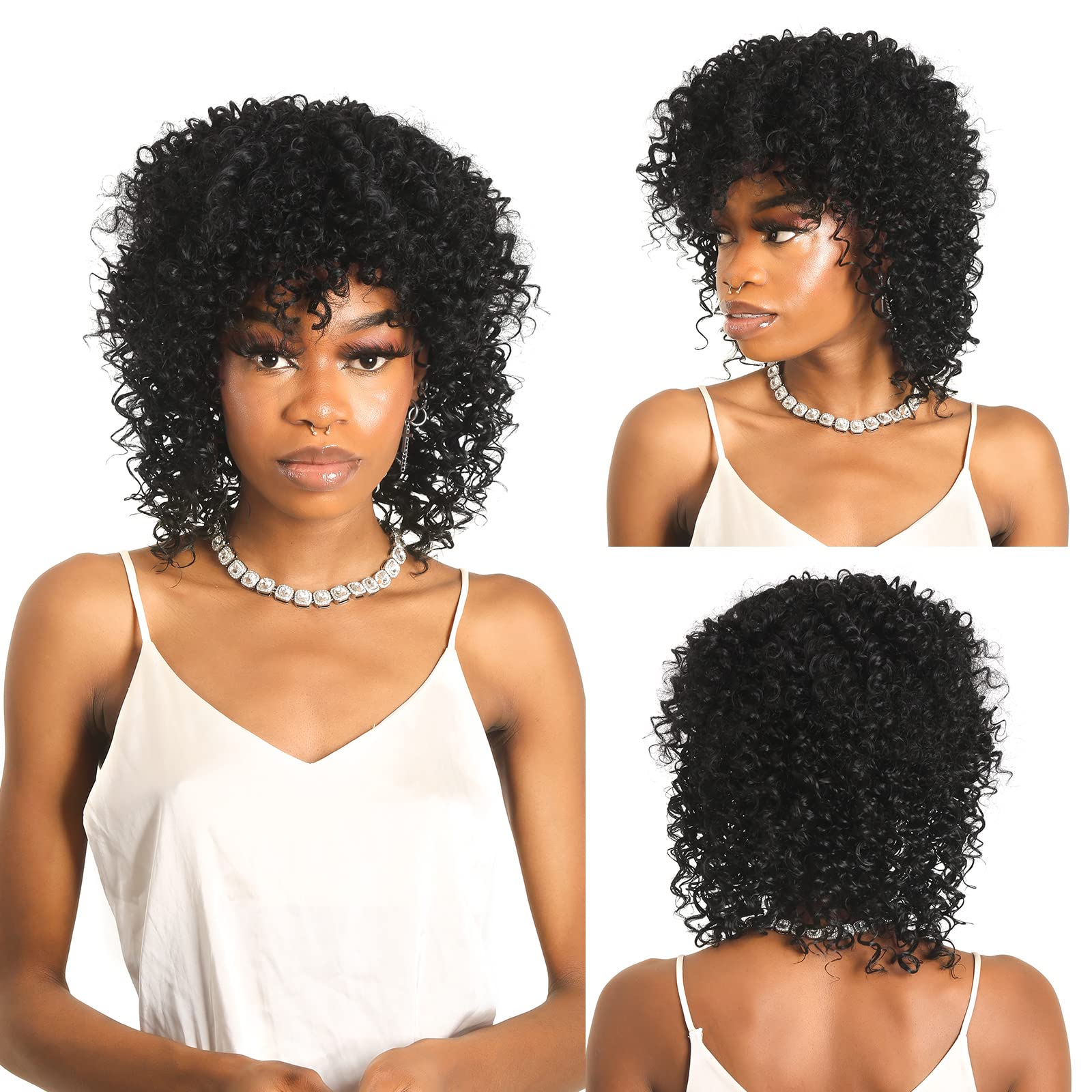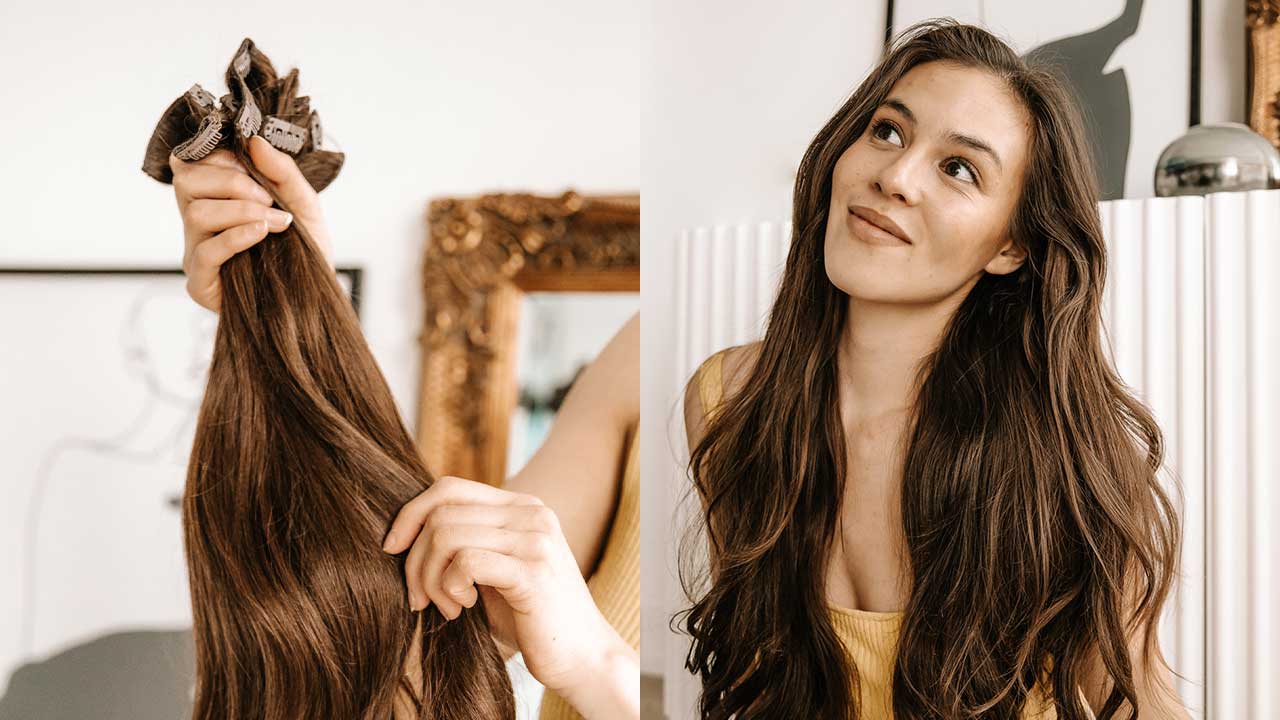
Introduction
Curling synthetic hair can be a fun way to change up your look and add some volume and texture to your style. However, it’s essential to approach the process with care to prevent damage to the synthetic fibers. Here are some tips for curling synthetic hair safely:
Choose the Right Tools:
When curling synthetic hair, opt for heat styling tools specifically designed for use with synthetic fibers. These tools are typically set at lower temperatures to prevent melting or damaging the hair. Avoid using high-heat tools meant for natural hair, as they can cause irreparable harm to synthetic strands.
Heat Protection:
Before curling your synthetic hair, apply a heat protectant spray or serum formulated for synthetic fibers. This will create a barrier between the hair and the heat styling tool, reducing the risk of heat damage and prolonging the lifespan of your synthetic hair.
Test Heat Settings:
If your heat styling tool has adjustable temperature settings, start with the lowest heat setting and gradually increase if needed. Synthetic hair is more sensitive to heat than natural hair, so using lower temperatures is key to preventing damage and maintaining the integrity of the fibers.
Curling Technique:
When curling synthetic hair, work in small sections to ensure even heat distribution and consistent curls. Wrap each section of hair around the curling iron or wand, holding for a few seconds before releasing. Avoid keeping the heat on the hair for too long to prevent overheating.
Cooling Time:
Allow the curls to cool completely before styling or manipulating them. This helps set the shape of the curl and ensures long-lasting results. You can gently cup the curls in your hand as they cool to help them retain their shape.
Avoid Over-Styling:
While it may be tempting to re-curl or touch up your synthetic hair throughout the day, try to minimize excessive heat styling. Over-styling can lead to heat damage, frizz, and reduced longevity of your synthetic hair. Opt for low-maintenance styles to preserve the quality of the hair.
Use Styling Products Sparingly:
When styling curled synthetic hair, use lightweight styling products such as hairspray or styling mousse to help set the curls and add definition. Avoid heavy or oily products that can weigh down the hair and cause it to become greasy or limp.
Gently Brush and Detangle:
To maintain the curls and prevent frizz, use a wide-tooth comb or a brush designed for synthetic hair to gently detangle the curls. Start from the ends and work your way up to avoid causing damage or disrupting the curl pattern.
Store Carefully:
After curling your synthetic hair, store it carefully to preserve the curls and prevent them from getting flattened or distorted. Consider using a wig stand or a mannequin head to maintain the shape of the curls when not in use.
Regular Maintenance:
Keep your synthetic hair looking its best by regularly cleaning and conditioning it according to the manufacturer’s instructions. Proper maintenance can help extend the life of your synthetic hair and keep it looking fresh and vibrant.

Choose Curl-Friendly Synthetic Hair:
When selecting synthetic hair for curling, opt for high-quality fibers that are specifically designed for heat styling. Some synthetic hair brands offer heat-resistant or heat-friendly options that can withstand the curling process more effectively.
Experiment with Different Curling Methods:
Explore various curling techniques, such as using flexi rods, foam rollers, or heatless curling methods, to achieve different types of curls without relying solely on heat styling. This allows you to create a range of looks while minimizing heat exposure to your synthetic hair.
Protective Styling at Night:
To preserve your curls and prevent them from becoming flattened while sleeping, consider wrapping your synthetic hair in a silk or satin scarf or using a satin bonnet. This protective measure helps maintain the integrity of the curls and reduces the need for daily restyling.
Experiment with Different Curl Sizes:
Explore various curling iron barrel sizes or roller diameters to achieve different types of curls, from tight coils to loose waves. This experimentation can help you discover the most flattering and versatile curl styles for your synthetic hair.
Use a Heat-Resistant Comb or Brush:
When styling and detangling curled synthetic hair, use a comb or brush specifically designed for use with heat-styled synthetic hair. These tools are constructed to withstand the heat and are gentle on the synthetic fibers, reducing the risk of damage.
Protect Curls During Showering and Swimming:
To prevent the curls from becoming wet or unraveled during showers or swimming, consider wearing a shower cap or a swim cap to shield your synthetic hair from moisture. This helps maintain the integrity of the curls and minimizes the need for restyling.
Avoid Excessive Sun Exposure:
Prolonged exposure to direct sunlight can impact the color and texture of synthetic hair, including curls. When spending time outdoors, consider wearing a hat or using UV protective products specifically formulated for synthetic hair to minimize sun damage.
Follow Manufacturer’s Guidelines:
Always follow the care and styling guidelines provided by the manufacturer of your synthetic hair products. These recommendations are tailored to the specific type of synthetic fibers used and can help you maintain the quality and appearance of your hair.

Consider Pre-Curled Synthetic Hair Extensions:
If you prefer a low-maintenance approach, consider purchasing pre-curled synthetic hair extensions or wigs. These products come with pre-styled curls that are designed to retain their shape, minimizing the need for additional heat styling.
Avoid Excessive Manipulation:
Once you’ve achieved your desired curls, refrain from excessive touching, brushing, or combing throughout the day. Over-manipulation can cause the curls to lose their shape and lead to frizz, particularly in synthetic hair, which is more prone to frizz than natural hair.
Be Mindful of Environmental Factors:
Exposure to high humidity or extreme weather conditions can impact the longevity of synthetic curls. Take precautions to shield your hair from environmental factors by using anti-humidity styling products or wearing protective head coverings when necessary.
Consult Professional Stylists:
If you’re uncertain about curling synthetic hair or selecting the right products and tools, consider consulting with professional hairstylists who [Something went wrong, please try again later.

Conclusion
By following these tips for curling synthetic hair safely, you can achieve beautiful curls without compromising the quality of your synthetic hair. With the right tools, techniques, and care, you can enjoy versatile styling options and a stunning hair transformation while keeping your synthetic hair healthy and damage-free.
